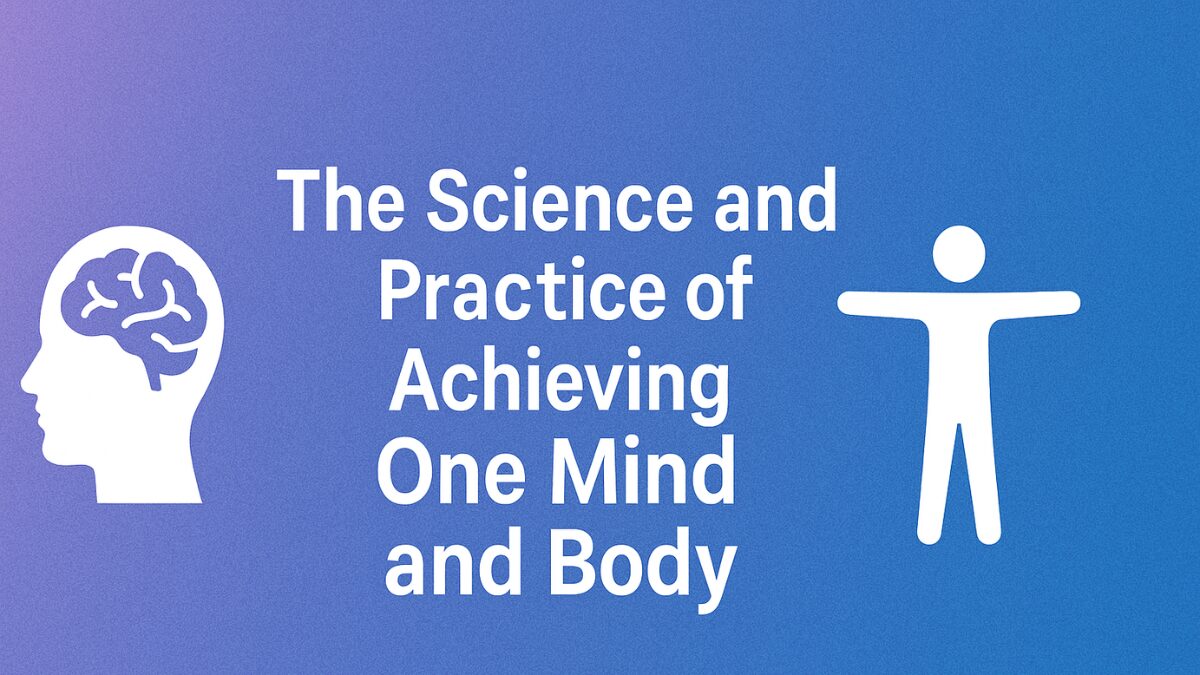Discover the science and practice of achieving one mind and body through mindfulness, neuroscience, and integrative wellness. Explore methods, benefits, and expert insights.
also read: https://www.comfortglobalhealths.com/experiential-therapy/
Introduction: The Power of Unity Between Mind and Body
In a fast-paced world where stress, distractions, and unhealthy habits dominate, achieving balance between the mind and body has become more essential than ever. The science and practice of achieving one mind and body is more than a philosophy—it’s a lifestyle that promotes total wellness. By understanding how our mental and physical systems interact, we unlock the potential for deep healing, heightened awareness, and greater happiness.
This guide explores the science behind mind-body connection and provides actionable steps to help you cultivate a harmonious, holistic life.
Understanding the Connection Between Mind and Body

What Does “One Mind and Body” Mean?
The phrase “one mind and body” refers to the holistic integration of our mental and physical selves. Instead of treating mental health and physical health separately, this approach views them as interdependent systems. The idea is that when the mind and body function in harmony, individuals experience better health, emotional resilience, and clarity.
Why Is This Connection So Important?
Scientific studies confirm that our thoughts can directly impact bodily functions. For instance, chronic stress can lead to increased cortisol levels, causing inflammation, digestive problems, and even heart disease. On the other hand, regular physical activity and meditation can enhance neuroplasticity, reduce anxiety, and promote overall well-being.
The Science Behind One Mind and Body Alignment
Neurological Insights
The brain and body communicate through a network of neurotransmitters and hormones. When we’re stressed or anxious, our body responds through a series of chemical reactions:
| Mental State | Physical Response |
|---|---|
| Stress | Elevated cortisol, increased heart rate |
| Joy | Release of dopamine and serotonin |
| Mindfulness | Reduced cortisol, increased GABA |
Practices like mindful meditation and yoga have been shown to physically change brain structures. A study by Harvard researchers revealed that consistent meditation can increase gray matter in areas linked to emotional regulation and memory.
Psychological and Behavioral Studies
Research in behavioral psychology also supports the concept of integrated mind-body health. Techniques such as Cognitive Behavioral Therapy (CBT) address negative thinking patterns, which can lead to better physical habits, such as improved sleep and nutrition.
Practical Techniques to Achieve One Mind and Body
Combining science with real-world practices is the key to success. Here are some tried and tested techniques that support the alignment of your mental and physical self.
1. Meditation and Mindfulness
Practicing meditation daily helps in calming the nervous system. Mindfulness teaches you to remain present, which directly reduces anxiety and stress levels. Apps like Headspace and Calm provide guided sessions for beginners.
2. Yoga and Breathwork
Yoga combines physical movement, breath, and mental focus—a perfect trifecta for uniting mind and body. Specific forms like Hatha Yoga and Kundalini are designed for inner alignment.
Breathwork, such as box breathing (inhaling for 4 seconds, holding, exhaling), activates the parasympathetic nervous system, aiding in relaxation and physical calm.
3. Nutritional Psychology
Food directly influences mood. Nutritional psychiatry shows that omega-3 fatty acids, probiotics, and leafy greens can improve brain function. Cutting down on processed food, sugar, and caffeine also reduces mental fog and fatigue.
4. Somatic Therapy
Somatic therapy helps individuals release trauma stored in the body. Through gentle movement and guided awareness, you can bring attention to where emotions are physically held—bridging the gap between mind and body.
5. Journaling and Visualization
Journaling clarifies thoughts and releases internal tension. Meanwhile, visualization exercises engage the brain’s mirror neurons, helping your body align with the mental image of success, peace, or health.
Benefits of Achieving One Mind and Body Alignment
The integration of body and mind isn’t just about feeling good—it’s also about living better. Here are the top benefits:
- Enhanced Focus and Memory – Mind-body practices strengthen brain networks responsible for learning and retention.
- Reduced Anxiety and Depression – Meditation and movement reduce levels of stress hormones.
- Improved Immune Function – A balanced system supports the body’s natural defenses.
- Increased Energy and Vitality – When mental blocks are cleared, the body feels lighter and more energetic.
- Greater Emotional Intelligence – Understanding bodily signals can enhance emotional regulation and empathy.
Comparison Table: Mind-Body Practices and Their Impact
| Practice | Mental Benefit | Physical Benefit |
|---|---|---|
| Meditation | Reduces anxiety | Lowers blood pressure |
| Yoga | Enhances awareness | Improves flexibility & strength |
| Breathwork | Calms the mind | Regulates heartbeat |
| Journaling | Improves clarity | Lowers muscle tension |
| Nutrition | Balances mood | Aids digestion and metabolism |
| Somatic Movement | Releases trauma | Reduces chronic pain |
The Role of Consistency and Lifestyle
One of the most important things to understand is that consistency beats intensity. Practicing for 10 minutes a day over a month can have more profound effects than sporadic, intense efforts.

Creating a daily routine around mind-body practices helps internalize the habits. Try incorporating the following:
- Morning: 5-minute breathwork + healthy breakfast
- Afternoon: 10-minute walk with mindfulness
- Evening: Journaling and yoga stretches
Over time, your brain and body start to function in harmony, making peace and productivity your new normal.
FAQs About The Science and Practice of Achieving One Mind and Body
1. Can children benefit from mind-body practices?
Yes. Simple practices like deep breathing and visualization can help children manage stress and improve focus.
2. Are there any risks to these techniques?
Generally, they’re safe, but people with trauma histories should approach somatic therapy with professional guidance.
3. How long does it take to feel results?
Some individuals feel benefits in days, while others may need weeks of consistent practice.
4. Is this the same as spiritual practice?
While some overlap exists, mind-body alignment is rooted in science and doesn’t require spiritual belief.
5. Can technology help in achieving alignment?
Yes. Apps for mindfulness, movement tracking, and even biofeedback can enhance your practice.
6. What if I don’t have much time?
Even 5 minutes a day can lead to meaningful changes over time.
7. Can diet alone align the mind and body?
No, but it plays a significant supporting role alongside mental and physical practices.
8. Do athletes use these methods?
Absolutely. Many elite performers use visualization, yoga, and breathwork for performance and recovery.
9. Is there scientific evidence for this approach?
Yes. Numerous peer-reviewed studies support the neurological and physiological effects of mind-body practices.
10. What age is ideal to start?
Any age is a good age—whether you’re 8 or 80, it’s never too early or late to begin aligning your mind and body.
Conclusion
The science and practice of achieving one mind and body is not a vague philosophical idea—it’s a measurable, achievable state backed by modern neuroscience and psychology. By incorporating practices like meditation, yoga, nutrition, and breathwork into your life, you can experience a profound transformation.
This alignment is not a destination but a continuous journey—a lifestyle shift that empowers you to live with purpose, clarity, and balance. Whether you’re looking to reduce stress, improve performance, or simply find inner peace, the path to integrating your mind and body holds the key.










